Stay in the know on all smart updates of your favorite topics.
Aan de bar met Inge Oskam: circulaire economie

Bubbels zijn er om op te drinken, niet om in te blijven zitten. Pak daarom je drankje en snacks erbij en schuif dinsdagmiddag 2 februari aan de bar met Inge Oskam. Onze digitale barman Luuk vraagt Inge het hemd van het lijf over circulaire economie. Wat is dat eigenlijk en wat moeten we ermee?
Inge Oskam
Dr Ir Inge Oskam geeft leiding aan de onderzoeksgroep Circulair Ontwerpen en Ondernemen. Samen met bedrijven, publieke organisaties, kennisinstellingen en studenten onderzoekt het lectoraat nieuwe manieren van ontwerpen, produceren en ondernemen, waarmee afgedankte producten en materialen kunnen worden omgezet in waardevolle toepassingen, ook wel repurpose genoemd.
Aanmelden
Het gesprek zal plaatsvinden via ZOOM en is gratis. Iedereen is welkom:
https://uva-live.zoom.us/j/82893491235
#SmartThursday: Milieuzone informatie

Eén van de services wordt getest in de use case Environmental Zone. Deze service is voor de Amsterdamse regio gestart in oktober 2019 en is gericht op het incar brengen van Milieu Zone informatie voor vrachtwagenchauffeurs. De verwachting is dat dit leidt tot meer business kansen voor private ondernemingen minder overtredingen voor weggebruikers en vooral een verbeterde luchtkwaliteit voor de Amsterdamse gemeenschap. Tot slot wordt een verdere doorontwikkeling verwacht op Europese schaal op basis van het ontwikkelde data-format.
Inkopen met Impact - hoe start je daarmee?

Met elke euro die je als organisatie uitgeeft aan producten en diensten, heb je de keuze voor het duurzamer, eerlijker of innovatiever alternatief. Denk aan circulaire en energiebesparende producten en diensten, maar ook aan verantwoorde inzet van technologie. Daarmee is inkopen een belangrijke driver voor een slimme, groene en gezonde toekomst. Budgetten worden anders ingezet en systemen en gewoontes worden zo doorbroken.
De Amsterdam Economic Board heeft inmiddels een heel Insights dossier gericht op Inkopen met Impact. Daarin vind je achtergrondartikelen, maar ook quickstarts die je op weg helpen bij het verantwoorder inkopen van bijvoorbeeld bedrijfscatering, werkkleding of bouw en onderhoud van je organisatie. Je vindt al deze quickstarts in het dossier Inkopen met Impact. Je vindt er ook links naar hoe je je kunt aansluiten bij activiteiten van de Board die je helpen met beter inkopen.
New Metropolitan Mobility podcast !

Did you do a bike exam in school?
Listen how Rotterdam is trying to get all inhabitants on a bike: https://bit.ly/mobilitypod
In this podcast Geert Kloppenburg speaks with Chris Bruntlett (Dutch Cycling Embassy), urban planner José Besselink and cycling specialist Bart Christiaens of the municipality of Rotterdam.
Please share your thoughts on the podcast!
#cycling #Rotterdam #podcast
Smart City projects in Netherlands/Amsterdam
Hello! I do some research for my company and I have to find out who (companies) are the players in the Smart City market (Netherlands/Amsterdam) who have successfully implemented projects without specializing in just one solution - so here I'm looking who offer complete smart city offers that combine several solutions (e-waste, e- bike, e-mobility, smart bench, smart light, smart parking….)? Thank you!
GO!-NH Versnellingsprogramma's - inschrijven voor 9 februari

GO!-NH is een serie groeiversnelling programma’s (accelerators) van de provincie Noord-Holland. Deze zijn opgesteld de economie in Noord-Holland te stimuleren met focus op de sectoren: bouw, beton, chemie, fashion, agri & food, verpakkingsmateriaal, handel en horeca. De thema’s voor de ontwikkeling van de circulaire economie in Noord-Holland zijn:
- Energietransitie
- Duurzame Mobiliteit
- Agri-food
- Circulaire Economie; Afval als Grondstof; Modulair ontwerp; Plastics; Textiel
Deze speciaal ontwikkelde programma’s ondersteunen startups en MKB’ers bij het op de markt brengen en opschalen van innovatieve producten en diensten op het gebied van duurzaamheid. Met trainingen, tools en professionele coaching door experts ontwikkel je jouw bedrijf.
GO!-NH heeft drie verschillende trajecten samengesteld, zodat ondernemers de beste ondersteuning krijgen die past bij de fase en omvang waarin hun bedrijf zich bevindt. Daarnaast vormt de GO!-NH Academy een laagdrempelige ontmoeting met GO!-NH waarbij masterclasses ook los gevolgd kunnen worden.
Corona testpaviljoen in Amsterdam-Zuidoost over op groene energie

Het corona testpaviljoen aan het Anton de Komplein in Amsterdam-Zuidoost heeft in één maand een energieverbruik vergelijkbaar met het jaarverbruik van 4 à 5 huishoudens. Deze energievraag werd tot het eind van vorige maand voldaan op basis van fossiele brandstoffen. Deze keuze is gemaakt vanwege de benodigde snelheid in realisatie. Na ingebruikname van het testpaviljoen is de focus gezet op het realiseren van een duurzame energievoorziening. Dankzij een lokale samenwerking met het naastgelegen Bijlmer Parktheater draait het testpaviljoen nu volledig op groene energie. Er wordt gebruik gemaakt van de energieaansluiting van het theater welke capaciteit over heeft. Dit neemt de CO2-uitstoot van de aggregaten volledig weg, en creëert een mooie lokale samenwerking tussen de twee partijen.
Zoals veel corona teststraten in Nederland maakt de locatie in Amsterdam Zuidoost gebruik van een open terrein, waar ter plekke tijdelijke voorzieningen zijn opgebouwd. De reden: gemakkelijk bereikbaar voor de bezoekers en flexibel in op en afschaling van de capaciteit. Het nadeel van zo’n locatie is dat er vaak geen vaste energieaansluitingen beschikbaar zijn. Dit wordt traditioneel in de evenementenwereld vanwege de flexibiliteit en termijn van inzet opgelost door gebruik te maken van dieselaggregaten. Zo ook bij het corona testpaviljoen in Amsterdam-Zuidoost. Gezien de urgentie en tijdelijke aard van de locatie was de initiële keuze voor aggregaten een logische. Helaas zijn deze aggregaten behoorlijk vervuilend, vooral wanneer de inzet langer voortduurt.
Voordeel voor alle partijen
Vanaf 24 November 2020 maakt het testpaviljoen daarom gebruik van de energieaansluiting van het naastgelegen theater. Dit is mogelijk omdat vanwege de corona-maatregelen het Bijlmer Parktheater niet op volledige capaciteit draait en daarom het vermogen van de energieaansluiting niet volledig benodigd is. Om het delen van de energie mogelijk te maken is een tijdelijke aansluiting gerealiseerd van het theater naar het testpaviljoen. Deze aansluiting heeft een energiemeter, zodat het theater kan worden gecompenseerd voor het energiegebruik op hun aansluiting. “Door onze energieaansluiting te delen met het testpaviljoen dragen we bij aan de energietransitie omdat het Bijlmer Parktheater een volledig duurzame energieleverancier heeft. Tegelijkertijd helpt het theater bij de oplossing van de coronapandemie. Dat is een prachtige samenwerking!” Aldus Frits Janszen van het Bijlmer Parktheater.
“Kopje suiker van de energietransitie”
NRG Accounting is onder andere in Amsterdam betrokken bij het flexibel inzetten van (semi)publieke energieaansluitingen en zag een kans om zowel het corona testpaviljoen te verduurzamen en een mooie lokale samenwerking te faciliteren. Jordi Leijnse van NRG Accounting deelt: “Het optimaliseren van bestaande energieaansluitingen is een essentieel onderdeel van energietransitie. Ten slotte, waarom zou je zelf investeren in kostbare en vervuilende aggregaten of een vaste energieaansluiting terwijl je de stroom vaak ook bij de buren kunt lenen. “Het kopje suiker van de energietransitie” noem ik dat graag.” Dit principe kan op veel meer locaties worden toegepast. Niet alleen bij corona testlocaties, maar bijvoorbeeld ook bij bouwplaatsen of festivals.
Smart Energy voor woningen en bedrijfsgebouwen: focus op Smart Charging. 12 januari 2021 - 15.00 uur

Interesse in Smart Charging bij woningen en bedrijfsgebouwen? Meld je aan voor het 2e webinar van de Smart Energy Community op 12 januari 2021!
We beginnen met Roland Steinmetz van EVConsult. Roland zal ingaan op het organiseren van toekomstvaste laadinfrastructuur bij bedrijven.
Dan hebben we 2 PowerPitches van inspirerende ondernemers:
* Welke kansen biedt e-mobility aan fleet-owners? Oscar Westerhof, PowerD
* Energy-management voor laadpalen, batterijen en opwek. Jan-Willem Heinen, Maxem Energy Solutions B.V.
We sluiten af met Maarten Berende van Enexis Groep, over een experiment met aansturing van de thuislaadpunten van 140 huishoudens: zou het lukken om tegelijkertijd het elektriciteitsnet te ontlasten en toch bij iedereen voor een volle accu te zorgen?
Programma: https://bit.ly/SmartEnergyCommunity
Registreren: https://bit.ly/SEC2_subscribe
Dit evenement is in het Nederlands / This event is in Dutch.
#SmartHome #FlexibleEnergy #SmartBuildings #SmartCharging
52 weken duurzaam, we gaan het gewoon doen.
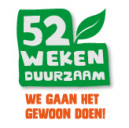
52wekenduurzaam nodigt je uit om je eigen leven stap voor stap duurzamer te maken. Een jaar lang iedere week een kleine verrassende en duurzame stap. Om te zien of het bij je past. Word je er gelukkig van, dan hou je het vol. Zo niet, dan skip je het. Wij onderzoeken wat er wel kan. Uitdagend, leuk, leerzaam en gratis. Loop je een stukje met ons mee?
Wij denken dat we met elkaar op een gemakkelijke manier veel duurzamer kunnen worden. Door elkaar te inspireren en uit te dagen. Door leuke en verrassende dingen te onderzoeken. Om zo je eigen versie van een duurzame leefstijl te ontwikkelen. We streven naar 5000 deelnemers in 2021. Hoe meer mensen meedoen, hoe beter. Voor onze Totale Impact Score, maar ook voor jezelf, want samen is veel leuker dan alleen. Dus geweldig als je nu al je gezin, je buren, vrienden en collega’s inspireert om ook mee te doen.
Give your Climate Adaptation project a stage during the Climate Adaptation Summit 2021!
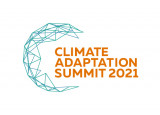
Amsterdam, how do you keep your head cool and your feet dry?
Give your project a stage during the CAS21!
Proud of your project? Does it take into account the changing climate and more extreme weather? Then you now have the opportunity to put your project on a world stage.
Expand your network and the visibility of your climate adaptive project on a global level and register to be part of the Climate Adaptation Summit 2021.
What is CAS21?
The online CAS21 (https://www.cas2021.nl/ ) will take place on 25 and 26 January, hosted by the Netherlands. CAS21 is a global climate adaptation conference organized by the Ministry of Infrastructure and the Environment. World leaders present the Adaptation Action
Agenda during this 24-hour climate summit. They make agreements to prepare for the consequences of more extreme weather.
Week full of events
In addition to the CAS21 itself, the whole week is devoted to climate adaptation. Various events will be organized by municipalities and partners between 19 and 25 January 2021.
Amsterdam should of course not be missing in this spectacle. CAS21 is the unique place to generate global visibility for Amsterdam's climate adaptive projects and innovations.
How do you give your project the stage?
We really need your input to show as much inspiring content as possible!
There are two ways to contribute:
1. We make a video of your (climate adaptive) project.
Register with us with your idea and a brief description of what you would like to show and tell in the short film. Do we choose your idea? Then a film crew will visit you and your project in the short term and we will make an inspiring video. This will be broadcast on January 25th and 26th as a side programma of the CAS21. Deadline for submitting your idea: before December 14th. Mail to: jaleesa.schaap@amsterdam.nl
2. Organize a coronaproof event in the week of 25 to 29 January 2021.
This week will be entirely devoted to Climate Adaptation. You too can contribute this week by organizing something on this theme! This can be both a physical and an online event. Think of an online workshop, digital innovation market, tile seesaw campaigns, planting façade gardens, large or small it does not matter! As long as it has to do with climate adaptation. Register with us so that we can include your contribution in our program. Deadline: before December 18. Mail to: jaleesa.schaap@amsterdam.nl
In order to make as much impact as possible, we try to bundle all ideas and projects. This way we can be part of CAS21 with a powerful program and communicate this as a whole to the outside through various channels.
We would love to hear from you!
Team Climate Adaptation
Gemeente Amsterdam
WEBINAR INNOVATIE ATELIER AMSTERDAM – BUIKSLOTERHAM

Maandag 7 december 2020 | 15.30 – 17.00 uur
“Wat betekent het als een wijk
Energie Positief wil worden? Welke zaken komen daar bij kijken? Dat wordt
op dit moment in Buiksloterham onderzocht in het Europese project
ATELIER. Denk mee, laat je inspireren en informeren in deze gratis
Innovatie Atelier webinar!”
De Gemeente Amsterdam wil samen met
lokale partners laten zien dat een (deel van de) wijk Buiksloterham
Energie Positief kan worden, oftewel meer energie levert dan gebruikt. In
het Europese project ATELIER wordt in twee Europese steden (Amsterdam en
Bilbao) een Positief Energie District gerealiseerd. In het project werken
30 organisaties samen aan het realiseren van deze doelstelling in de
periode van november 2019 tot december 2024.
Om een wijk energie te laten leveren, zijn veel vernieuwingen en
innovaties nodig. In het Innovatie Atelier Buiksloterham wordt door de
gemeente, bedrijven, kennisinstellingen en bewoners samengewerkt om deze
vernieuwingen in de praktijk te realiseren. Denk aan duurzame energie
opwek, opslag en uitwisseling. Dit brengt niet alleen technische
uitdagingen met zich mee, maar ook uitdagingen rond financiering en
betaalbaarheid, wetgeving en juridische kaders, en sociale innovatie. De
burger heeft bij het realiseren van een energie-positieve wijk een
belangrijke rol.
In deze webinar wordt de officiële aftrap gegeven van het Innovatie
Atelier Buiksloterham. Dit is de gelegenheid om u te informeren over de
ambities en de werkwijze om een energie-positieve wijk te realiseren in
Buiksloterham!
Voor meer informatie: https://smartcity-atelier.eu/
Sprekers
- Wethouder van Doorninck over het belang van dergelijke projecten in de duurzaamheidsambities in Amsterdam.
- Vertegenwoordigers van Gemeente Amsterdam, Schoonschip, TNO, Spectral, Waag
- Moderator: Waldemar Torenstra
Interessant Volkskrant-artikel over de groeiende beweging van citizen-sensing
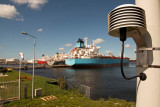
De provincie Noord-Holland is twee jaar geleden in samenwerking met het RIVM, de Waag Society, Tata Steel en lokale overheden het project Hollandse Luchten gestart om de luchtkwaliteit op zwaarder belaste locaties rondom het Noordzeekanaalgebied fijnmazig in kaart te brengen. Hierbij worden inwoners begeleid en opgeleid om de sensoren in elkaar te zetten en de uitkomsten van de metingen te begrijpen. Vervolgens kan er een discussie worden gehouden over het gezamenlijk ontstane beeld van de omgevingskwaliteit.
De Volkskrant schreef een artikel over hoe het meten van de omgevingskwaliteit door inwoners met de jaren is ontwikkeld en wat voor een invloed dit heeft op de discussie rondom leefbaarheid van gebieden.
Transforming citizen sensing

A two day conference on open source hardware for air quality measurement across borders.
This is an online event. Information on how to join the meetup will follow after registration.
//
In many corners of the world, people choose to measure local air quality out of concern for their neighbourhood, their health, the climate or agriculture. These citizens collect data with the help of affordable and accessible sensor technology and sometimes come together to be part of a citizen sensing network - think of the global networks of open source hardware such as GOSH and Hackteria. And then there are international sensor communities, such as global platform Sensor.Community, Public Lab and Smart Citizen kit, and Dutch initiatives, such as Snuffelfiets, Meet je stad and Hollandse Luchten. These citizen sensing initiatives now have a wealth of knowledge and experience in making open source sensors. They form sensing communities that collaborate successfully on a local level. This often takes root in top-down measurement programmes aimed at a specific group in a specific location. But air quality knows no borders — it is an urgent matter across the globe. It’s about time we share knowledge, learn from each other, and make sensor technology accessible to a broad and international group with a common environmental concern.
On Wednesday December 9th and Thursday December 10th Waag and SODAQ will organise the Transforming citizen sensing conference. During this two-day conference, a wide variety of citizens, environmental activists, makers, ecologist, technical experts and researchers will come together to discuss their concerns and needs around air quality measurement. Global sensing initiatives are invited to share their knowledge. The goal is to identify the requirements a sensor should meet in order to address the common issue and to discover the limits of what is technically possible.
Involve the user in the design process
The production process of (sensor) technology is often inaccessible to the consumer, who has little or no say in the subject of the product. During this conference, the communities that use sensor technology will be involved in the first phase of the design process. This open production process is also referred to as open source hardware (OSH). Open source hardware is not only about transparent, accessible and reproducible hardware, but is mainly aimed at a participatory and community-driven design process. The experiences of communities form the basis of the design and the entire process (from design to prototype to product) is transparent for users.
What concerns are most pressing globally? What design challenges do these concerns present to sensor making? And what can we learn from experienced open source hardware initiatives around the world? Join us to find out.
Your input will be considered during the development of Sodaq and Waag’s open source prototype.
Day 1 | sensor making: from use case to design challenge
On day one we will start with presentations by sensing initiatives. What prompted them to start the initiative, what lessons have they learned, what was the biggest design challenge and how do they involve the community? After this there will be a joint discussion about the bottlenecks in measuring air quality and we will go deeper into why and what air quality sensors can help for. We will end this day with a clear overview of the needs of the participants and the related design challenges. In addition, we will let you know what role participants have in the further development of the sensor.
When: Wednesday December 9
Time: 7:00 pm - 9:15 pm
Programme
19:00 hrs - Introduction programme
19:05 hrs - Presentation use cases*:
- Lukas Mocek, Sensor.Community
19:40 hrs - Q&A
19:50 hrs - Break
20:00 hrs - Sharing concerns and identify needs
20:30 hrs - Formulate design challenges
21:15 hrs - End
Day 2 | from design challenge to first sensor concepts
On day two, sensor makers will share their knowledge on: electricity, internet connection, sensor technology, modularity, software, data quality and data visualisation. In groups, researchers, data specialists and citizen initiatives will work on the design challenges of day one. Your input and knowledge will therefore have a direct impact on the sensor that will be developed in 2021. At the end of the day, you will know the latest developments in (air quality) sensors, you will have gotten to know other makers, you will have made an active contribution to the design of a new air quality sensor and you will be part of a worldwide network of sensor makers.
When: Thursday December 10
Time: 7:00 pm - 9:15 pm
Programme
19:00 hrs - Introduction programme
19:05 hrs - Presentation use cases*
19:40 hrs - Q&A
19:50 hrs - Break
20:00 hrs - Design challenge
20:35 hrs - Presents results
21:15 hrs - End
* Speakers will be announced on this page shortly.
Do you have experience in making sensors and would you like to share your knowledge with others in the field? And do you want to be part of a worldwide, open source hardware community?
join us online on december 9 & 10
Open Next
The Transforming citizen sensing conference is part of the European Open Next project. This open source project links to the maker movement. This movement reduces the distinction between professional makers and amateurs. Open source hardware (OSH) is an important part that contributes to this. It makes knowledge sharing available in an accessible way, so that innovation and the do-it-yourself culture is reflected in the home and at work.
This means that products or services are no longer designed to be patented, expensive or closed, but rather accessible and transparent. A well-known platform for OSH is Wikifactory. Here everyone can share his or her idea, but also improve and recreate ideas or products from other people. For proprietary rights, you can choose from several tested and established certificates such as, FOSS (based on OSH), Creative Commons(which is linked to different creative products) or CERN, which focuses on specific OSH and offers a choice of both commercial and non- commercial goals. For example, a non-commercial certificate no longer protects a complete product, but can be opened up under a number of conditions. Consider releasing construction drawings of an air quality sensor so that they can be downloaded from anywhere in the world. In this way you give people at home or at work the opportunity to build something themselves with which to measure their air quality and you increase the range and reliability of the measurements. This way of working has an impact on the traditional business model and deserves a redefinition in today's society. The certificates mentioned make it possible to enter into an inclusive collaboration during the design and development phase and can be extended to the development of new versions. Citizens and communities can then be involved based on their needs and/or skills.
Waag en Sodaq
Waag previously developed the HoLu sensor with participants from the local measurement communities of Hollandse Luchten. They deal with air pollution on a daily basis and are concerned about their health, environment and climate. By formulating the design questions together with them, we ensure that the technology serves what the citizen scientists need. Waag and Sodaq are working together and are investigating how the HoLu sensor kit can be further developed into a sustainable sensor based on open source hardware. Sodaq is specialised in developing sensor technology with an interest in open-source hardware developments. Together we work towards the goal of developing an air quality sensor based on input from a wide audience, so that we can make sensor technology accessible at a global level and thus connect with other communities where the theme of air pollution is urgent. The results of the conference and the design drawings will be shared here at a later stage. In January we organise a series of design prints that you can be part of.
Maak plaats voor het klimaat! #1
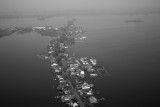
We weten dat het klimaat aan het veranderen is en we weten dat het daarom warmer, natter én droger wordt. Maar we weten niet wanneer of waar het hoe warm wordt of hoeveel regen er op een specifieke dag gaat vallen. Toch kunnen we ondanks deze onzekerheid anticiperen op de meest voor de hand liggende scenario's. Kunnen we door meer ruimte voor de natuur de grootste klappen opvangen? Wat gaat dit betekenen voor de landbouw, voor de woningbouwopgave en de bereikbaarheid van ons land? Tijdens twee afleveringen van Ruimte! Ruimte! Ruimte! duiken we in de wereld van de omgevingsplanning en het anticiperen op klimaatverandering. Wat kunnen we verwachten van deze verandering en hoe ziet Nederland er straks uit? Volgende week kijken we naar de gevolgen voor onze directe leefomgeving en wat we nu al kunnen doen. Deze week beginnen we met het jaar 2120, hoe ziet Nederland er over honderd jaar uit?
Start inhaarlemmermeer.nl

Lokaal Community Platform voor bewoners, bedrijven en bezoekers van Haarlemmermeer. (Amsterdam Metropolitan Area)
Sinds 1995 zijn wij inwoners in de gemeente Haarlemmermeer. In de afgelopen 25 jaar is er veel veranderd binnen de gemeente. Soms als antwoord op, maar vaker vooruitlopend op de ontwikkelingen. De gemeente groeit. Mensen willen er wonen, werken en studeren, maar ook meer bedrijven vestigen zich hier in het hart van de economie.
Daarnaast vertegenwoordigen toeristen en evenementen in de regio elk jaar een aanzienlijk aantal bezoekers.
We denken na over het juiste evenwicht tussen leefbaarheid en welvaart.
- Over duurzaamheid en sociale verantwoordelijkheid.
- Over lusten verhogen en lasten verminderen.
- Over een integrale aanpak die zowel bewoners centraal zet, als bezoekers gastvrij ontvangt.
- Onze focus ligt op beter en niet op meer.
- Op kwaliteit en niet op kwantiteit.
We dragen actief bij aan een leefbare, aantrekkelijke en welvarende gemeente waar de economische ontwikkeling niet ten koste gaat van de leefbaarheid.
We werken intensief aan het verbeteren van de reputatie van Haarlemmermeer.
Wij willen met dit Community Platform bewoners verbinden zowel jong als oud. Ideeën transparant maken en een ieder hierbij betrekken. Elke leeftijdsgroep moet hiervoor in aanmerking kunnen komen. Door het initiëren van dit platform hopen wij bewoners een kans te geven door zijn/haar ideeën te ventileren en eventueel te implementeren, zodat wij allen als bewoners van Haarlemmermeer hiervan gebruik kunnen maken. Door het zichtbaar maken van de mogelijkheden en behoeften kunnen we de band als bewoners versterken en hierdoor een veilige, sfeervolle leefomgeving creëren.
Wij zijn dit community platform gestart vanuit onze eigen ideologie. Het geloof om een community te starten waar mensen elkaar kunnen helpen en bereiken. Waar wensen werkelijkheid kunnen worden als we gezamenlijk onze krachten bundelen. Laten we starten met de bewoner die bepaalt wat er noodzakelijk is en de gemeente kan informeren over de benodigdheden.
#Citizens&Living #DigitalCity
Wicked Problems
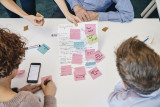
Te wicked? Niet voor ons.
Wij werken allemaal aan urgente, complexe, maatschappelijke uitdagingen. Issues die schier onoplosbaar lijken, van dilemma’s en paradoxen omgeven, nog niet duidelijk hoe het moet. Wel is duidelijk dát het moet, dat we elkaar nodig
hebben en dat we er NU aan moeten beginnen. Om met de woorden van Jan Rotmans te spreken; we leven niet in een tijdperk van verandering maar in een verandering van tijdperk. En hier hoort een nieuwe gereedschapskist bij.
En of je nou aan energietransitie werkt, andere mobiliteitssystemen, creëren van waterstofhubs, peer to peer autodeelsystemen, het maakt niet uit, we zien dat al deze opgaven op enig moment tegen gelijksoortige barrières aanlopen. Op samenwerking, financiering, privacy, onvoldoende aansluiting op de maatschappij, om maar een paar voorbeelden te noemen.
Unieke samenwerking
Als Amsterdam Smart City netwerk willen en kunnen we deze opgaven niet laten liggen. Door het bundelen van onze kennis en expertise kunnen we als netwerk iets unieks bieden en de wil en durf tonen om deze barrières te doorbreken. De betrokken partners die dit uitdenken en begeleiden zijn RHDHV, Kennisland, Drift, NEMO, Arcadis, Alliander, HvA en Metabolic. Zij bundelen hun expertise en ervaring om de echte vragen boven tafel te krijgen, tot nieuwe manieren van samenwerken te komen en barrières te doorbreken. We richten ons met name op de start van de samenwerking. Gezamenlijk ontwikkelen we een ‘wicked problem aanpak’. Op een nieuwe manier, lerend door te doen, exploratief.
Waar moet je aan denken?
Wat is eigenlijk het echte probleem? Wiens probleem is dit? Hoe kijken anderen er tegenaan? Welke andere partijen lijken nodig? Hoe vind je ze? Hoe ga je om met eigenaarschap en botsende frames? Hoe zorg je dat je al in
een vroeg stadium de maatschappij (bewoners, ondernemers, werknemers, etc) betrekt en hun ervaringen in het project trekt? Het wicked problem team zet nieuwe methoden in voor het beantwoorden van deze vragen. En het creëren van de benodigde commitment om het vraagstuk aan te pakken. Niets staat van te voren vast, want we passen ons aan aan wat we tegenkomen. Met elkaar ontwikkelen we een nieuwe aanpak om de barrières te doorbreken.
Wat als je luchtkwaliteit op wijkniveau zou kunnen voorspellen?
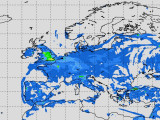
'Morgen wordt het zonnig met kans op wat luchtvervuiling.' Een droom, of binnenkort werkelijkheid?
Dit is een online evenement. Informatie over het bijwonen van de meetup volgt na registratie.
Meld je aan
Er is een groeiende beweging van burgers die de leefomgeving actief in kaart brengen. Wanneer is het water het schoonst om een duik te nemen in de gracht bij jou in de buurt? Wat is de ‘gezondste’ route naar je werk? En hoe staat het écht met de geluidsoverlast in jouw woonwijk?
Het is steeds gemakkelijker om zelf data te verzamelen en te analyseren: met je smartphone, slimme horloge, thermostaat of met een zelfgebouwde sensor. Maar kun je ook voorspellingen doen op basis van die data? En wat als we satellietdata en sensoren met elkaar combineren? Hoe zou dat ons leven kunnen veranderen? Misschien is een toekomstbeeld waar je luchtvervuiling net zoals het weer kan voorspellen niet eens zo ver weg.
Tijdens de meetup op donderdag 26 november kijken we samen met burgers en experts naar de manier waarop satellietgegevens en modellen van het Copernicus Programma kunnen bijdragen aan het voorspellen van luchtkwaliteit op lokaal niveau. Daarnaast staan we stil bij de belangrijkste ontwikkelingen van het zelf meten van luchtkwaliteit. Wat kun je met de laatste (sensor)technologie precies meten in jouw (woon)omgeving, hoe doe je dat het beste, en hoe kun je de verschillende data gebruiken om jouw leefomgeving gezonder te maken?
Centraal staat de vraag: wat zou een burger doen met de mogelijkheid om voorspellingen te doen over luchtkwaliteit? Het gesprek en de bevindingen van de meetup zullen gebruikt worden voor de projecten Hollandse Luchten en Sentinel Citizen. In het project Hollandse Luchten ondersteunen we een groep burgers die de luchtkwaliteit meten met goedkope sensoren, terwijl we met Sentinel Citizen onderzoeken hoe de data die we met Hollandse Luchten verzamelen gecombineerd kan worden met de data van de Sentinel-satellietfamilie. Binnen het project Sentinel Citizen heeft Waag samen met IHS (Institute for Housing and Urban Development Studies aan de Erasmus Universiteit Rotterdam) een statistische voorspellingsmethode voor luchtvervuiling ontwikkeld, die de gegevens van de HoLu-sensoren gebruikt om de luchtvervuiling op wijkniveau te voorspellingen. Tijdens de meetup laten we de technologie zien en gaan we met jullie in gesprek over de behoeftes en mogelijke verbeteringen.
Praat en denk mee tijdens de meetup op donderdag 26 november.
Programma
19:30 uur - Opening en inleiding programma - Teska Drosten, communicator Smart Citizens Lab Waag
19:40 uur - Interview met Judith Veenkamp, hoofd Smart Citizens Lab Waag, over trends en ontwikkelingen in citizen science
19:50 uur - Presentatie Sentinel Citizen - Miha Turšič, hoofd Open Space Lab Waag en mede-oprichter van het Cultural Centre of European Space Technologies
20:00 uur - Presentatie forecast module - Alexander Los, IHS, Erasmus Universiteit Rotterdam
20:15 uur - Paneldiscussie
20:45 uur - Afsluiting
De meetup is zowel interessant voor burgers die de luchtkwaliteit in hun omgeving meten als bewoners die nog moeten starten met meten. Neem vast een kijkje op het de website van het burgermeetplatform Hollandse Luchten of bekijk de documentaire Citizen Science Revolution - Making Sense.
Over Smart Citizens Lab
In het Smart Citizens Lab verkennen we middels citizen science tools en applicaties hoe bewoners zelf data verzamelen en de wereld om hun heen in kaart kunnen brengen. Citizen science staat voor wetenschappelijk onderzoek dat geheel of gedeeltelijk wordt uitgevoerd door burgers.
Hungarian article on Amsterdam: What would change in the city where you live?
This article is written by Dobos Emese (hvg.hu) in collaboration with the Dutch Embassy in Hungary.
Most people think of technology and data about the smart city, while Amsterdam Smart City thinks of a donut. Creative ideas for more liveable cities.
What is a smart city? “Most of all, how can we make cities more liveable places for the people who live, work, play and improve their quality of life,” says Frans-Anton Vermast, Strategic Adviser and International Smart City Ambassador, who has been working in Amsterdam since 2008. (smart) strategy. For more than a decade, this was quite different: back then, the smart city was more about how we can improve air quality through electricity and connectivity, ”he recalls.
According to a large-scale survey of Amsterdammers, air pollution has been identified as a major problem. And because this is caused by fossil fuel vehicles, as a first step, plenty of electric chargers have been installed throughout the city to encourage more environmentally friendly transport.
The smart city strategy is, of course, the result of joint work: residents, companies, experts, NGOs and public authorities are equally involved in thinking. In the meantime, an “innovation cemetery” has also been set up: unused, unrealised ideas are collected here: they are reviewed every six months, because a problem that arises later may be the result of an earlier idea.
“Over the years, we’ve increasingly shifted from technology solutions to solving people’s problems,” he says, as their orientation has changed. It is precisely this approach that underpins the Netherlands ’smart city strategy established in 2017, that mobility, accessibility, sustainable and low-energy homes, improving air quality and healthy urbanisation are equally important in a truly smart city.
Would you give up sitting in a car for € 1,000 a month?
And there are several initiatives in Amsterdam to reduce air pollution and traffic. SMARTX presenting the strategies of Europe's leading smart city !!! conference, several of these will be presented by the expert. One is an electric charging station system through which not only can we charge our e-car in public places, for example, but if we have more energy than we need, we can recharge it - and the city pays us in return.
But it’s not just because it’s financially worthwhile to be a citizen of a smarter city: as part of the Zuidas project, thousands of workers in Amsterdam’s business center have been asked to leave their cars in parking garages and travel differently. The city paid them € 1,000 in exchange (that’s what employees would get for a leased car from the company). As part of the project, they were wondering when and why people would sit in a car. Most often they missed the car on the weekends, during a visit to a relative and shopping, and in the evening, with the thinness of public transport, but apart from this, they easily switched to community car-sharing solutions, resorted to taxis, rentals - or hopped on bikes. And from the feedback, they can form a useful strategy for reducing the city’s traffic.
Part of that is the Roboat program: anyone who has been to Amsterdam knows that canals weave across the city. Self-guided boats are also used to dampen traffic jams: they can also be used to supply the city's restaurants, so they can also act as freight carriers, but tourists can also use these boats: all you have to do is hit where you want to go and the boat takes the group there.
And the coronavirus epidemic has also accelerated developments already underway: mass-sensing cameras, also started due to traffic reductions, could be used in the city during the pandemic to monitor where crowds might develop (anonymously, of course) and whether people are being held. the distance. So through an app, residents had the opportunity to see how many there were in a park right now, so they could consider whether it was wise to go there.
The role of city dwellers
Problems are often first perceived and affected by city dwellers themselves, so it is important to know how they can be active. They need clear needs and channels to know where to turn with a problem or idea. And the best cities in the world are excellent at this, ”points out Samu Szemerey, a senior settlement expert at the Lechner Knowledge Center.
A Dutch initiative is FixMyStreet: the application was created specifically with the aim that if someone notices an extinct street lamp or pit, they can immediately signal it with a map - and the competent authorities will solve the problem. A similar domestic example is Járókelő.hu: anyone on the website can report a detected public space problem, which is processed voluntarily and forwarded to the authorities.
“There is also a huge opportunity for a city to be able to make good use of incoming data,” explains Samu Szemerey. For example, there is a Hungarian settlement where a flat-rate contract was switched on the basis of the collected and analysed data - the city saved 40 percent in terms of operation with the decision.
A donut model?
According to the 2020 ranking of the Smart City Index listing smart cities, Singapore, Helsinki and Zurich are the “smartest”: how city residents also classify their own city based on five main areas plays a big role in this. These are health and safety, mobility, activity, opportunity and governance. In addition to data that characterize the economy and technological development of cities, the participation of residents is also an important aspect. By the way, Amsterdam was ranked 9th, Vienna 25th and Budapest 77th and 109th.
Amsterdam is the first major city to introduce the so-called “Donut model”: the model is named after a British economist, Kate Raworth, a researcher at the Institute for Environmental Change at the University of Oxford, and the Dutch capital will now use it as a guideline in urban development. What is the point of this? The innermost circle of the donut, the hole, symbolizes basic needs (such as food, clean water, housing, public health, energy, education, gender equality, income, and a say in public life), and what is outside the donut’s ring indicates that we have exceeded the limits of the Earth, the ecological boundaries. Everyone should be in the donut, but no one is here: developed countries are beyond the donut and developing countries are in the hole.
Although the Netherlands is what we associate with wooden slippers and windmills, and the city, for example, is at the forefront of environmentally friendly, pollution-free urban mobility, there are aspects that are not met: the city’s emissions, for example, are 31 percent higher than in 1990. level - 62 percent of CO2 emissions come from imports of construction materials, food and consumer products. That is why Marieke van Doorninck, Deputy Mayor of Amsterdam, is also urging that materials be recycled and that as many natural sources as possible be used in construction.
The article was prepared in collaboration with the Dutch Embassy in Hungary and hvg.hu.
How to make cities #GreenerHealthierWilder! Voices from around the world.
Save this date - 29.10 - and register for #GreenerHealthierWilder, an event brought to you by our friends from National Park City Foundation, Salzburg Global Seminar and World Urban Parks.
1 day, 3 sessions, 50 voices! 🌳🌎
From #Amsterdamm Daan Bleichrodt #tinyforests - from #ClujNapoca #SomesDelivery - from #Bogota Maria Mejia & many many others.
EC-Link Platform

You would like to connect with Urban Environmental Sustainability practitioners and researchers in China and exchange your approaches to green transport, clean energy, compact urban development, water and solid waste management, green buildings and municipal finance? Then sign up to the EC-Link platform! The platform links Eco Cities across Europe and China, offering inspiring examples from both sides of Eurasia and enabling direct contacts to the innovators. With the help of an integrated translation tool, posts can be translated into Chinese and English with just one click. Use of the platform is free of charge: http://eclink.org/bbs/#/?lang=en
A description of how the platform works can be downloaded here: http://eclink.org/ec_platform/upload/document/EC-Link_Users'%20Guide-EN.pdf
Stay up to date
Get notified about new updates, opportunities or events that match your interests.

